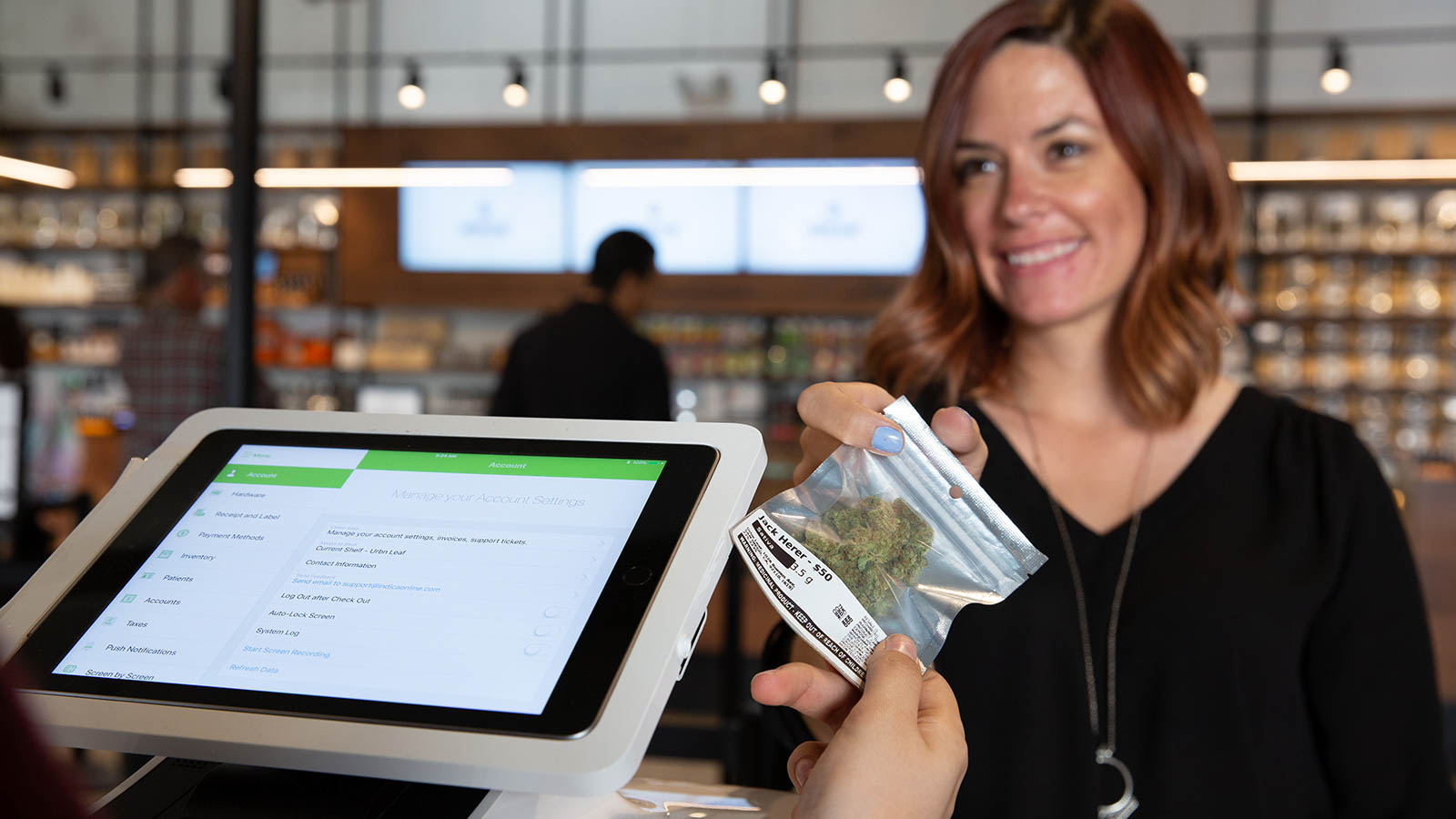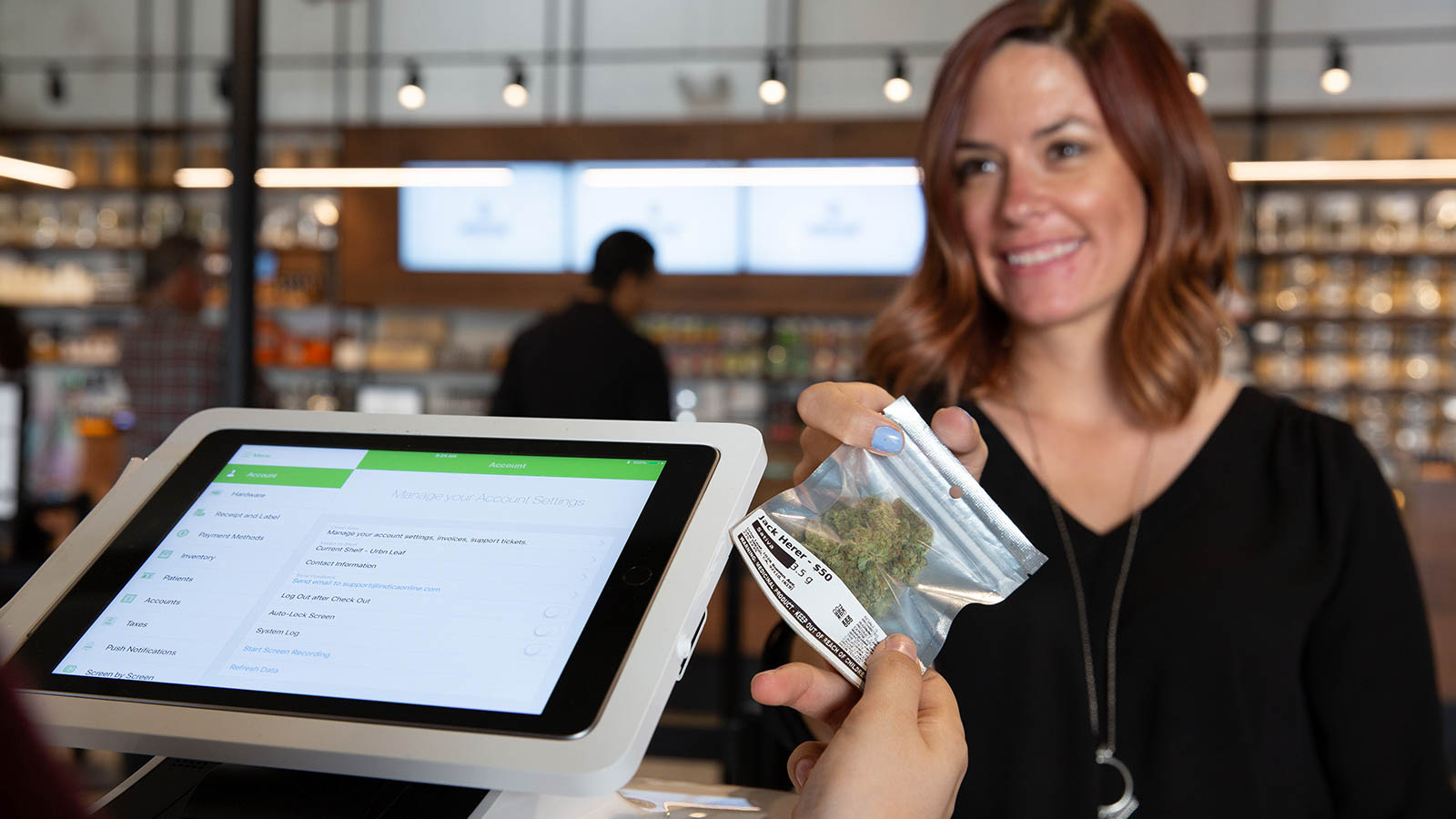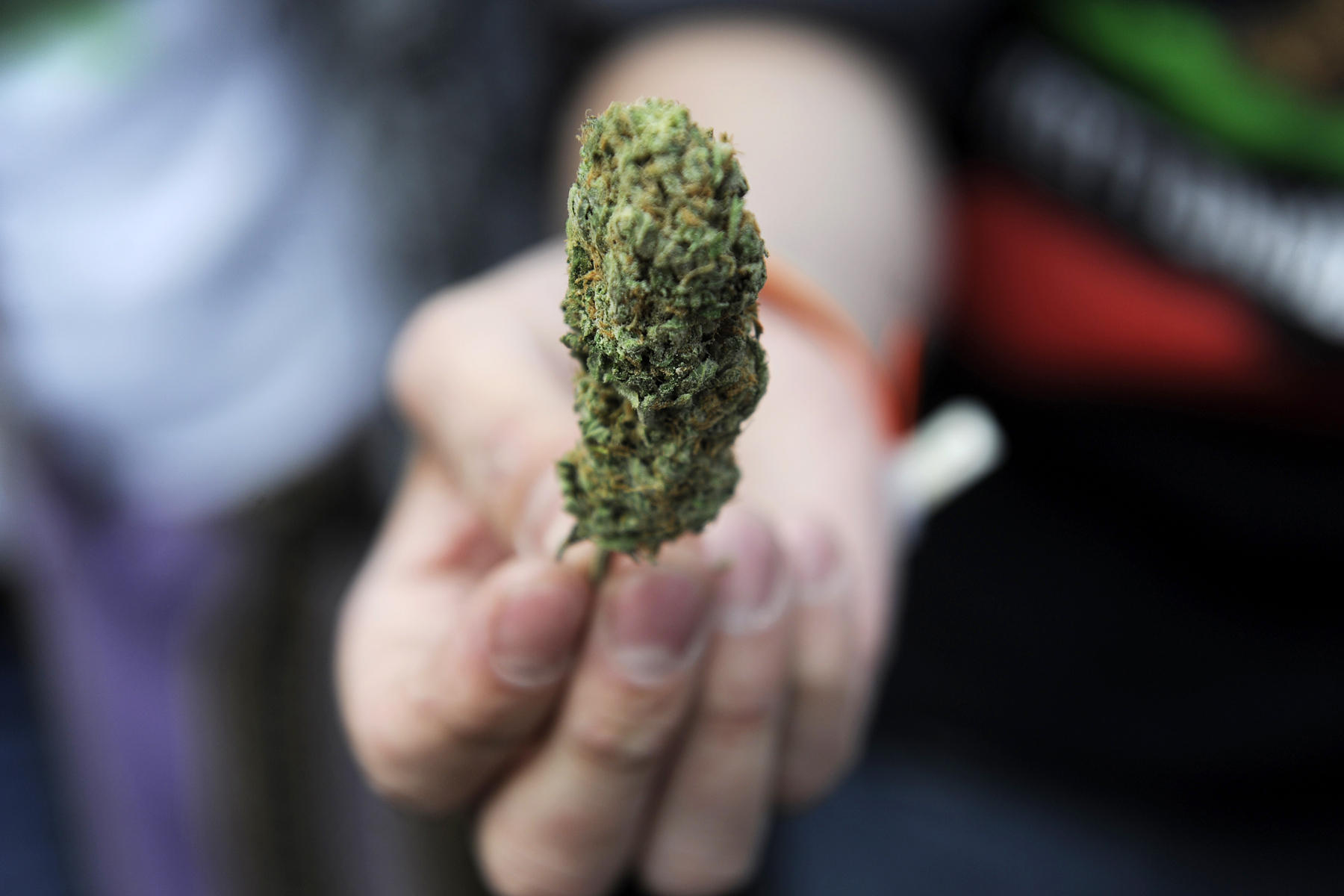
The budtender is the hand that feeds.
While it’s considered an entry-level position (the median salary for a budtender in the United States was $32,000 per year in 2018), the budtender is a critical role in the cannabis ecosystem. Many people who work today as managers, cultivators, producers, or even in C-suite positions, started in budtender roles.
If you want to be a part of the weed industry, becoming a budtender is a great way to get your foot in the door. The opportunity can help you learn the tricks of the cannabis trade, the plant’s extensive medical benefits, and potential uses for consumers, depending on what ails them.
While the position revolves around customer service, the budtender job description casts a very wide net. Fair warning: It’s a far cry from an easy gig. Budtenders must be the face of the dispensary to consumers, abide by county and state regulations, verify age and identification, facilitate sales, all while educating people on every facet of cannabis throughout the process. That includes both how to consume cannabis and cannabis culture. Sounds easy, peasy, right?
Here are six crucial things the prospective budtender needs to know.
The History of Budtenders (n.)
Let’s open up the jar and take a closer look at the history of the term. The San Francisco Buyers Club, the first medical dispensary in the U.S., opened in 1992 during the AIDS crisis, is the birthplace of the budtender vocation in the country. It’s a play on words combining flower or “bud” with “bartender” and referred at first to the act of weighing out and preparing the bud for sale.
The term budtender made Merriam-Webster’s official canon in March 2018. Merriam-Webster attributes the first-known use of “budtender” to 1997 by author Linda Yellin, although the exact text Merriam-Webster cites is unknown.
Yellin wrote: “I learn from my helpful budtender (yes, that’s his title) that there are two types of marijuana … . He has me sniffing jars of different strains with names like Chemdawg and Amnesia.”
The position grew as medical marijuana legalization exploded through the 2000s. As medical storefronts began to open in California, Washington, and Colorado, the requirements of the budtender shifted. A job that once felt like a casual dealer who weighed out your weed gradually morphed into a more clinical advisory role. Budtenders speak directly to medical patients and address their concerns in a way that most unlicensed dealers had not.
The Modern Budtender
Enter adult-use cannabis. Modern budtenders must balance the medical patient’s needs with the recreational consumer’s wants, providing extensive product knowledge for both.
“In the beginning, a lot of people just saw it as an easy job,” said Rhea Bridwell, a four-year veteran cannabis dispensary manager based in Denver and currently working as a budtender at Boulder-born chain Terrapin Care Station. “It’s definitely not easy. I do stop and think, ‘Wow, this is a lot of pressure.’ You have to follow so many strict rules. If the budtender makes a mistake, it’s not just a slap on the wrist, it can actually impact your job, the store, the bigger picture.”
The modern budtender is expected to know extensively about cannabis products for medical patients and recreational consumers in states that have legalized adult-use marijuana. (Photo by Gina Coleman)
The budtender’s job description has evolved as quickly as the industry itself. Dominic Cucina, manager of Boston-based East Coast dispensary The Botanist, said that the evolution of the budtender position has been prompted by the wave of new information and data emerging about cannabis and its various forms of use every day.
“Typical conversations used to include THC percentages, whether the strain was indica or sativa, and some psychoactive effects,” Cucina said. “Now, we are in a position to talk about terpene profiles, medical benefits of cannabinoids, micro-dosing. So the amount of information required to suggest cannabis products has really been the biggest part of the evolution.”
How Does the Role Function Today?
In most legal markets, regulations require weed be pre-packaged in its production facility, so the “weighing-out” function has been phased out of most budtender roles. Budtenders are now also in charge of the register and accepting cash-only payments. The industry awaits banking solutions beyond cash, but for now, dealing with and counting out all-cash at the end of the day is another unique challenge to the job.
The amount of jobs available has soared, too. Case in point: A recent Rockefeller Institute report from the State University of New York (SUNY), Albany, detailed that legal cannabis would add 40,000 jobs to New York state alone.
“There are so many more of these jobs than there were,” Bridwell said, speaking to the growth in Colorado’s industry since recreational legalization in 2014. “A lot of people get into as a starter job or need a placeholder. It is retail, but it’s another side of retail.”
Is the term budtender still seen as the best descriptor for the job’s modern iteration? “The role of a budtender in the industry has changed exponentially, over the last five years alone. Even the word itself has changed to more professional, medical terms such as ‘patient specialist,’ ‘dispensary agent,’ ‘patient consultant,’ ” Cucina said.
What Does It Take to be a Budtender?
What skill sets do employers look for when hiring for a budtender? Along with a clean criminal record, it depends on the hiring manager and the requirements of the exact role they seek to fill.
“I would say first and foremost, passion for the cannabis industry is an absolute must for this position,” Cucina said. “People are coming to you for information to treat serious ailments, and if you treat this as ‘just a job,’ it’s a disservice to the customer.”
Bridwell reinforces Cucina’s observation.
“It takes commitment,” Bridwell said. “I came from a retail background and it’s completely different from that, mainly because of the diversity you see. To be a budtender in a dispensary, you have to have an open mind; you can’t be too wound up. Keep in mind you’re dealing with customers in a more personable way, people who really need your help.”
Dominic Cucina manages East Coast dispensary The Botanist (Photo courtesy of The Botanist).
Colorado Department of Revenue data shows a loss in medical sales after adult-use legalization, pointing to many of those patients joining the movement to recreational over time. This means modern budtenders need to straddle the line and deal with both medical and recreational consumers. Every customer who walks through the doors will have a different need or request. The budtender answers them all.
“Especially now in Colorado, because recreational is so big and medical is becoming less of a thing, you get the trickle-down of medical patients on the recreational side,” Bridwell explained. “People want access, but don’t want to go through the whole medical process. It is still medicine for a lot of people.”
Until the U.S. changes its financial laws at the federal level, marijuana largely remains a cash-only business. (Photo by Gina Coleman)
What should be on the prospective budtender’s resume? Cucina said his dispensary looks for a background in the service industry, specifically working in emerging cannabis markets, because industry experience is so hard to come by. A successful budtender must be an eternal student, according to Cucina. “You are getting new information every single day about various marijuana products, so the desire to learn is an underrated quality for budtenders,” Cucina explained.
A strong work ethic and understanding of social media can help, but some dispensaries also provide training programs and other forms of budtender training.
At the end of the day, many dispensaries are seeking a culture fit. “They look for like a pure heart and people who don’t have altered intentions of the industry or an alternative perspective of the impact they’re having,” Bridwell said. “When you hire people and then you start training them and explaining all the really strict rules, you may see it in their eyes that they realize then, ‘I can’t handle this amount of pressure.’”
The Most Challenging Part of the Job
In your day-to-day as a budtender, you will encounter some unique challenges.
Bridwell believes the toughest part in her experience is when travelers come in from weed-prohibited states asking questions about travel that budtenders can’t legally answer.
“It can be really hard sometimes for budtenders to see people from out-of-state, people who really need the medicine for an upsetting reason,” Bridwell said. “Specifically, for out-of-state people who don’t have direct access to cannabis, it can be discouraging because it’s out of our hands. The responsibility to tell them the laws can be hard.”
For Cucina, the most challenging part of the job is keeping up with the constant changes in regulations while simultaneously running a shop. “The marijuana industry’s growing pains are another factor not to be underestimated,” he said. “When an industry is just getting off the ground, there are a lot of changes in an operating year. Keeping track of those changes has proven to be the largest challenge so far.”
What’s the Career Path?
“Getting your foot in the door as a budtender shows that you’re there and committed to the industry,” Bridwell said. She explained that Terrapin is always looking to promote from within, leading to roles in upper-level regional management, marketing, operational director, or “anything you might be interested in. Honestly, there is so much room for growth in the industry, it’s crazy.”
At The Botanist, the growth leads frequently to in-store roles including inventory management, floor management, and community outreach. “The career path possibilities are endless when your starting point is a budtender, even within a dispensary alone,” Cucina said. “There are many different opportunities to showcase a specific skill set, it just depends on the needs and hierarchy of the business.”
This career path has been known to lead into other arenas of the cannabis business, as well. “This industry as a whole is built for growth, so while some may start at a dispensary, they could end up working in a grow facility or a processing facility based on their education and experience.”
As weed legalization grows into new states and markets, so do the jobs. When a company is based in multiple states, Cucina said, “It can take you anywhere.”
Feature image by Gina Coleman/Weedmaps















